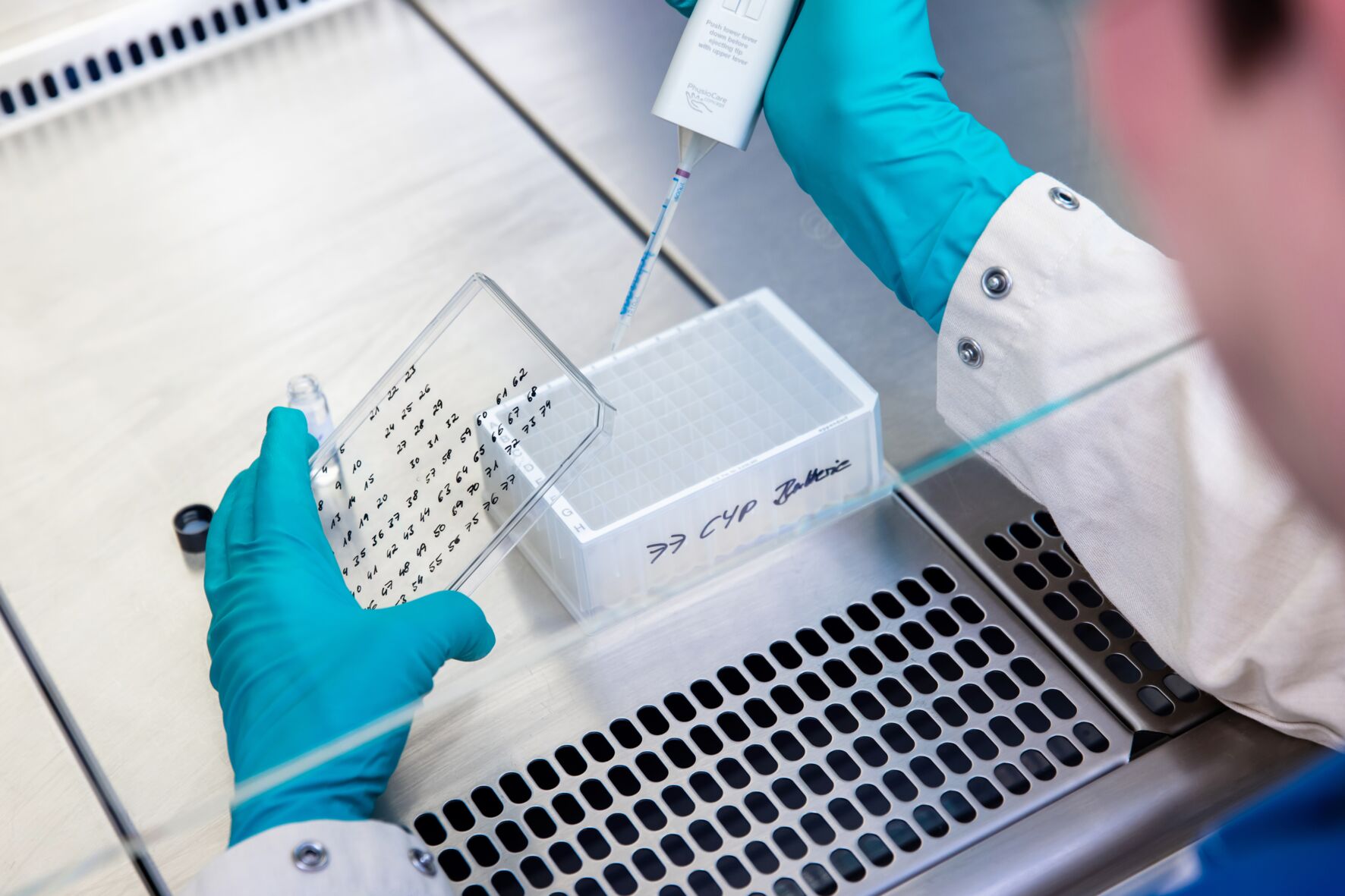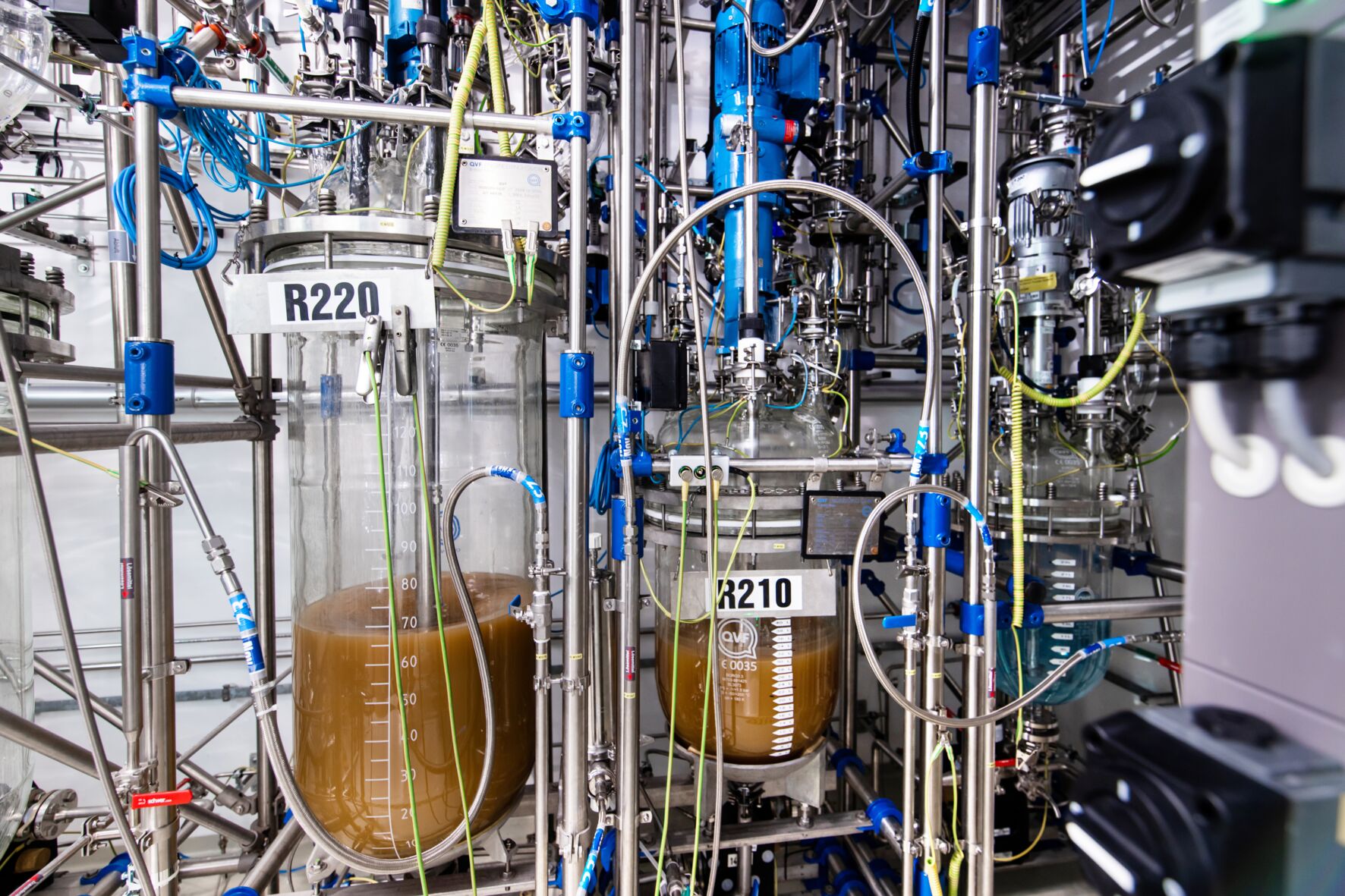Microbial biotransformations often allow for the synthesis of drug metabolites in the most straightforward manner by late-stage derivatization, avoiding a potentially lengthy de novo synthesis.
As a first step of the synthesis, we offer metabolite screening with a TOP panel of wild-type strains and a TOP panel of CYP variants for identification of metabolite-producing strains, using LC–MS analysis. These 2 TOP panels combine a selection of the historically most successful strains. The TOP wild-type strain panel consists of 55 fungi and bacteria strains, while the TOP CYP panel contains 119 human wild-type CYP3A4, 2C19, 2C8, 2C9, 1A2, or 2D6 enzymes and bacterial CYP102A1 (BM3) mutants.

Optionally, we can expand to a screening of chemical oxidation and glucuronidation methods and a wider range of our in-house-strain collection.
As a second step, we proceed with microbial metabolite processing, including scale-up to a 10-L fermenter, work-up, purification, and structure elucidation. Optionally, we offer metabolite synthesis by chemical oxidation or glucuronidation or de novo synthesis.
As a third step, microbial metabolite scale-up is conducted in up to 100-L fermenters to produce your drug metabolites on a milligrams to grams scale.



